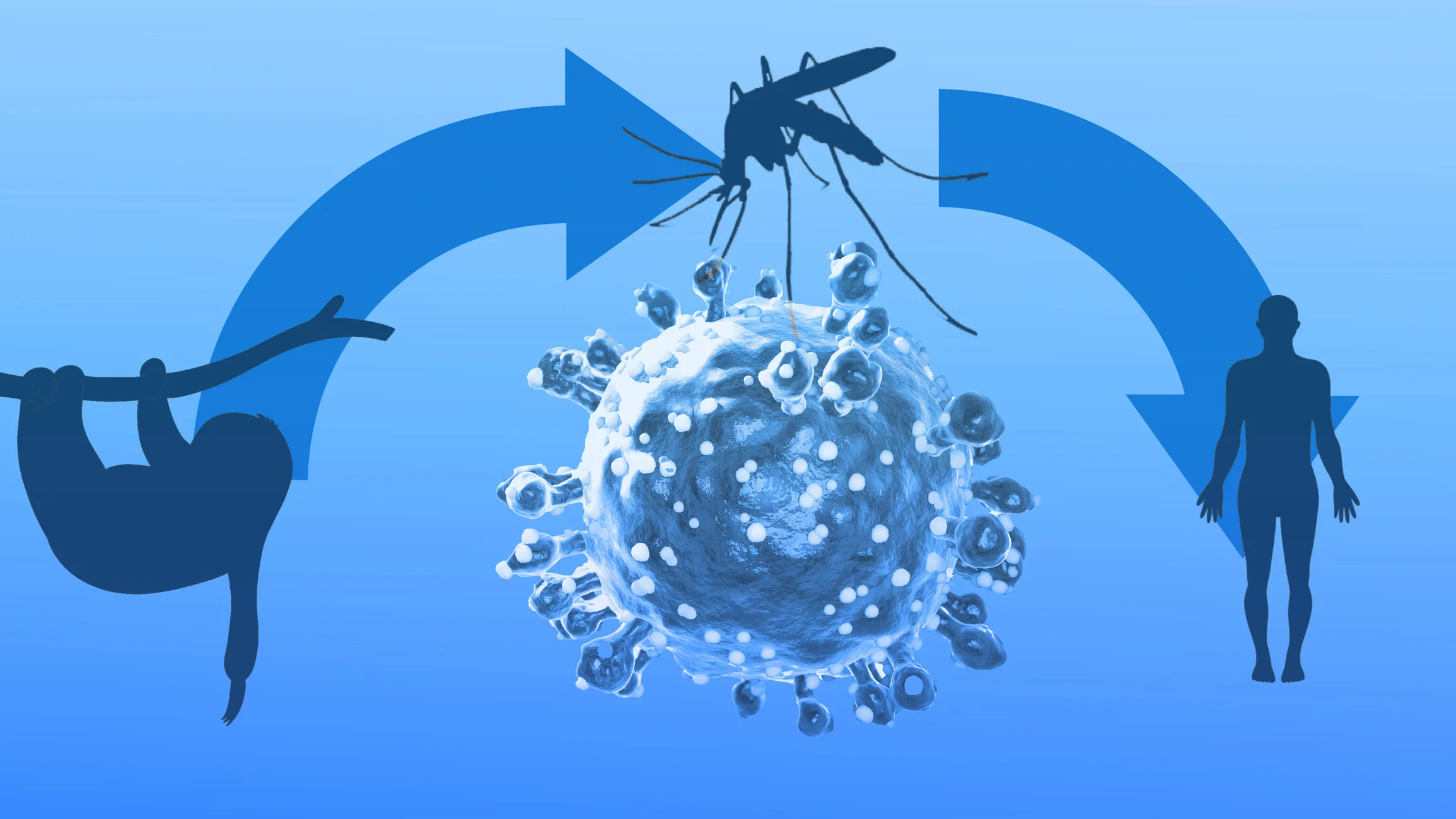Sloth fever, or Oropouche fever, is a viral sickness caused by infection by the Oropouche virus. The major sources of its transmission are the bites by mosquitoes and midges and have been a matter of concern some in parts of South America for many decades. There has been a recent outbreak of this sickness in parts of America and also Europe and has raised global concerns due to its spread in different countries.
History and Epidemiology
The Oropouche virus was observed for the first time in Trinidad and Tobago, near a river called Oropouche. Until now it has infected over 500,000 people, mostly in Latin America and the Caribbean. The virus is endemic to parts of Brazil, Peru, Panama, and Trinidad and Tobago. In 2024, there was an outbreak reported, with over 8000 cases recorded in Brazil, Bolivia, Peru, Colombia, and Cuba by August 1st.
Two deaths have been reported in Brazil, and also suspected for mother to baby transmission when the patient was an expecting mother. It has been related to fetal deaths and congenital abnormalities. The virus is now spreading slowly in United States, and 21 cases have been registered in Florida and New York, they are all linked to recent travels by the patients to Cuba. Europe has registered such instances in travelers getting back from Brazil and Cuba.
Transmission and Hosts
Oropouche virus is frequently transmitted with by bites of infected biting midges (Culicoides paraensis) and mosquitoes. The virus circulates among these bugs and non-human vertebrate hosts, including sloths, birds, and rodents, in wild areas. It is believed that people become infected after they visit these areas and spread through infected mosquito bites. As soon as as it arrives in urban areas though infected travelers, it can spread from person to person, however, there are no cases reported of such transmissions within United State as of now.
Signs and Clinical Reports
Oropouche virus infection has a variety of signs, normally appearing 3 to 10 days after exposure. The general symptoms are:
- Fever
- Dizziness
- Headache
- Stiffness
- Fatigue
- Nausea
- Muscles and joint pain
- Diarrhea
- Rash skin
In most instances, this infection is mild and symptoms stop appearing within a week, however, there is a big share (70%) of patients may continue for a few weeks. In a few cases, the virus can result in more extreme neuroinvasive diseases, which include meningitis and encephalitis symptoms and may also include neck stiffness, and even death in some cases.
Remedy Measures:
Diagnosis of this virus infection may be challenging since their symptoms are somewhat similar to those of different mosquito-borne diseases such as dengue and chikungunya fever. Also, the matter of concern is that the Laboratory diagnosis isn’t available at medical labs yet.
As of now, the New York State Department of Health is conducting tests for patients who are suffering from this infection or those who have recently traveled to infected regions and show similar symptoms. The CDC is working with the State Department to carry out testing of the infected people at different centers.
There is no specific cure available for this infection until now. Experts suggest the infected individuals focus on taking rest, more fluid intake, and prescribed medicines to control fever and pain-related issues.
The recent outbreak of the Oropouche virus has raised enormous public health concerns because of several factors:
- Fast spread: The virus is spreading to new regions at a fast pace to many regions, which includes many parts of America and Europe.
- Can Have Severe Complications: Some of the infections are moderate, however, this virus has been observed in cases resulting in neural infections and, in rare instances, resulting in the death of the patient. There is also a risk of mother to fetus transmission and that too can result in fetal deaths or congenital abnormalities.
- Lack of Treatment: Since there is no treatment or vaccine currently available for this viral infection, the only way to handle now is through a supportive cure.
- Potential Threat: The major serious concern is that the virus can be brought into urban areas by travelers and can potentially spread to others through mosquito bites.
Prevention and Control
Since there is no specific treatment or vaccine currently available for the cure of this type of infection the only way to handle it following the expert suggestions and medical prescriptions. There few prevention and control measures that we can follow:
- 1. Getting Rid of Mosquitoes and Midge Bites: You can use mosquito repellents, wear full sleeves, trousers also make sure that there are no open spaces in the home where the bugs or mosquitoes can enter the house.
- 2. Follow Travel Advisories: The Health Government issues regular travel advisories, especially for pregnant ladies, cautioning them to avoid the visit to the areas that are already affected with Oropouche virus infections.
- 3. Tracking: There is a need for an efficient system that can track the cases in the affected region Facilities to be updated to diagnose the cases. It is important for early detection and cure.
- 4. Public Awareness: Public awareness programs will prove beneficial in countering this infection. This will create awareness among the public to avoid being in contact to such infections and the ways to fight this if they are already infected or have similar symptoms.
Future Research And Cure
The spread of the Oropouche virus has created a quick requirement for research and preventive measures that include:
1. Vaccine Improvement: There is a need to develop vaccines that can be given to the infected and potential cases. The experts are already engaged to find solutions for this.
2. Conducting Antiviral Remedial Studies: Conducting antiviral remedial studies to figure out the testing capacity of the antiviral drugs that can correctly treat Oropouche virus infection and the effects of the infection.
3. Epidemiological Research: Conducting epidemiological studies to counter the virus transmission dynamics and health hazards will help to find different solutions such as vaccination, other preventive measures, and important suggestions for the affected individuals, etc.








